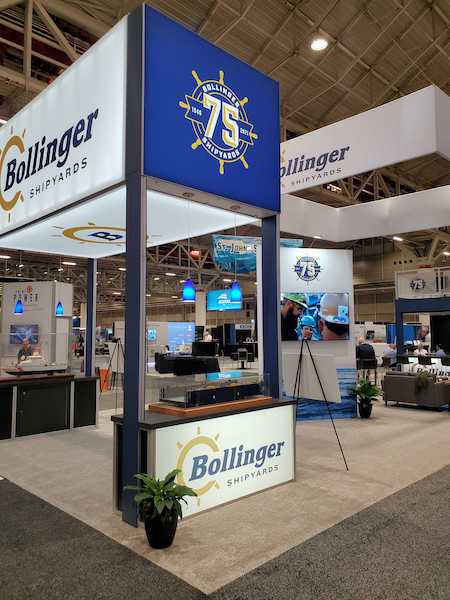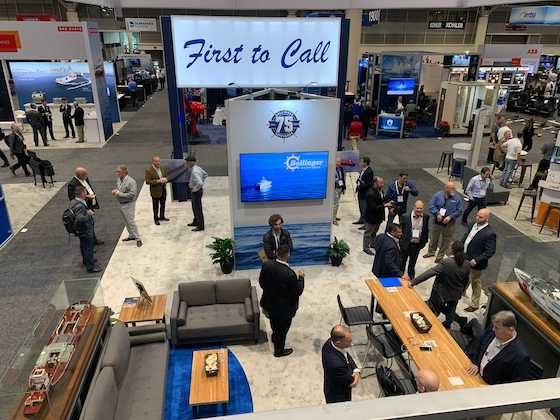Whether you’re getting ready for your first trade show or you’re already a pro, you need to be thinking about how to measure trade show effectiveness. This is an important way to gauge your success, justify the costs of exhibiting, and identify the most profitable or cost-effective exhibiting opportunities for your company.
Your strategy for measuring trade show effectiveness may change over time and from show to show, depending on your goals, audience, industry, and the technology available. You may be wondering: How do you find the ROI of a trade show? How is booth traffic measured if you’re not selling a product? How do you follow up effectively with your leads?
We answer all this and more as we break down just how to measure trade show effectiveness before, during, and after an event to give you a comprehensive understanding of your performance.
Table of Contents
- How to Measure Trade Show Effectiveness: Before
- How to Measure Trade Show Effectiveness: During
- How to Measure Trade Show Effectiveness: After
- Make the Most of Your Next Trade Show
How to Measure Trade Show Effectiveness: Before
Before you hit the trade show floor, you’ll want to set yourself up for a successful event. You need to know how to measure trade show effectiveness accurately and lay the groundwork for tracking your results.
How Do You Prepare for Success?
There are some things you can do before you wake up the morning of the event to help yourself out:
- Send invitations to current and potential customers.
- Invite potential customers to meetings before you rent booth space or set aside private meeting space in your booth.
- If there are certain staff who are just supposed to be meeting with clients, require them to book a certain number of meetings before they’re allowed to go to the show.
- Make announcements about exhibiting on your website, social media, and newsletter, as well as in other outlets via press releases.
- Tell people where your booth space is located.
- Organize client events (such as dinners, cocktail parties, and outings) as touchpoints for current and prospective clients before trade shows.
For client events, you can also assign them a dollar value and include that when you’re calculating the overall revenue proposition. Make sure to keep track of clicks, responses, and RSVPs, both in person and online. This can help you measure how effective your marketing is beforehand and determine if you should invest more or less money into these strategies.
How Do You Set Up Your Booth?

Your booth can make or break your trade show experience. Everyone knows that location and picking the right booth size are important, but having an eye-catching booth design makes it much more likely that someone will stop and check out your products or services.
Not only that, but keeping all of the logistics straight, meeting deadlines, taking advantage of early bird discounts, consolidating shipments and shipping on time, and getting your booth set up correctly can impact your success at an event while avoiding extra costs.
You can work with our experienced team at Cardinal Expo to make sure that your booth design maximizes the effectiveness of your trade show experience. We also offer comprehensive trade show management services, which include tracking deadlines and discounts, as well as handling all logistics, shipping, and booth set up and take down.
How to Measure Trade Show Effectiveness: During
Trade shows can be exciting, but chaotic, times. Make sure you’re not asking, “How do you track on site sales?” or “Just how is booth traffic measured?” when you’re in the thick of things. Have a plan in place beforehand and make sure it’s being followed during the show.
How Do You Track On-Site Sales?
If you do sales on site at a trade show, knowing how to measure trade show effectiveness is a little easier than if you’re going based on leads. Naturally, you can track revenue and sales by looking at your inventory after the show, identifying the most popular on-site products, and reviewing the profit you’ve made.
How Is Booth Traffic Measured?

If you provide a service or have a longer sales cycle, you may not find it helpful to use on-site sales to measure your success. Keeping track of how many visitors you get to your booth can be an important place to start.
Ways to understand how booth traffic is measured include:
- Having a sign-in sheet. If you’re concerned people won’t sign up, offer an initiative, like a raffle to be completed after the trade show ends.
- Collecting business cards from visitors.
- Counting the number of brochures or pamphlets that your staff gave away.
- Counting any email receipts or text receipts if you send something to people after they leave their contact info at your booth.
You can also combine any of the tactics above to get a more accurate measure of booth traffic.
If you do not sell a product at a trade show, you may also want to track brand recognition. Keeping track of the number of promotional items and premiums you handed out, as well as how many prizes were won from games at your booth, can help you track how many touchpoints you executed to promote the overall brand.
How Do You Track On-Site Leads?
Make sure to have a system in place to keep track of how many meetings were completed, how many customers were met with, how many came to dinners or parties or events you hosted, and how many leads were generated by your team at the trade show.
Ways to track on-site leads include:
- Using sign-in sheets, calendar invites, or email receipts to track meetings.
- Collecting business cards, scanning visitor badges, or getting contact information from leads that your staff speak with at your booth.
- Tracking RSVPs and using sign-in sheets for any events that you host for leads.
Any time you’re collecting contact information, whether it’s from someone’s business card or a badge they’re wearing, it’s generally a good practice to confirm their information. Ask if that’s the best phone number to reach the individual (rather than a generic 1-800 number). Cultivating and strengthening relationships can help with long-term customer retention.
Come up with a plan to track this information consistently across your team, and make sure that every staff member knows what to do.
How to Measure Trade Show Effectiveness: After
Of course, what comes after the show is just as crucial to sealing the deal. Understanding how to find the ROI of a trade show and how to measure trade show effectiveness often relies on how well follow-up is handled. Good follow-through is important for turning leads into customers and maintaining a positive reputation for your brand.
How Do You Follow Up?
You may feel great about how you did on the show floor, but not following up can end up being a huge loss when you’re looking at the effectiveness of a trade show. Sending emails, sharing photos of the booth and from the event, showing off success stories, and more will allow you to capitalize on the excitement of the trade show quickly and efficiently.
Before the event begins, make sure to be clear about who will follow up on leads and how to track those leads after the trade show ends. It’s important to have an infrastructure built into your post-trade show tracking to ensure that nothing slips through the cracks. This process will also allow you to track closures from the event you attended.
How Do You Find the ROI of a Trade Show?
Ultimately, finding the ROI (or return on investment) of a trade show follows a basic formula: net profit divided by cost of investment.
Determine your profit by looking at sales, revenue, and any other value gained, such as leads or booth traffic. Calculate the cost of your investment by adding up the cost of your booth space, booth design, shipping, travel, lodging, dining, premiums and giveaways, show services (such as electrical and lighting), and all the hours your staff spent before, during, and after the show.
If you determine the ROI was too low at your latest trade shows, read up on some ways to get a great trade show booth on a budget.
Make the Most of Your Next Trade Show
Trade shows are a great way to meet new customers, reconnect with existing customers, and grow your business. However, if you don’t know how to measure trade show effectiveness, figure out just how booth traffic is measured, or understand how to find the ROI of a trade show, then it can seriously impede your experience.
Cardinal Expo can walk you through every decision before the show and provide support on the day of the trade show. In addition to booth design, we provide full management services, including logistics, shipping, set up, take down, and storage. Contact us below to learn more!
Contact Us Today
We at Cardinal Expo are here to answer any questions you may have, provide you with additional information, and create an effective solution for your exhibit needs.
"*" indicates required fields

